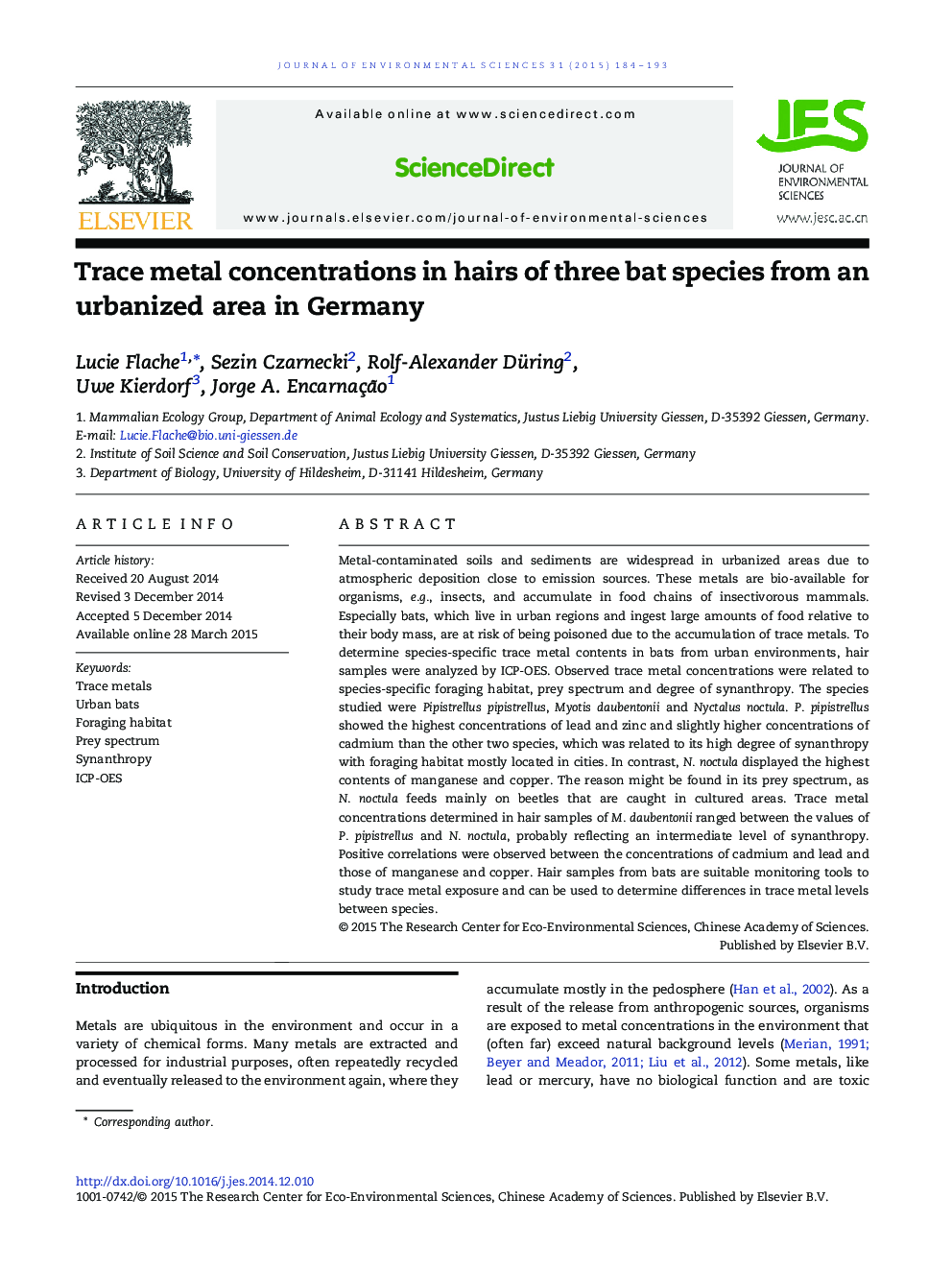| کد مقاله | کد نشریه | سال انتشار | مقاله انگلیسی | نسخه تمام متن |
|---|---|---|---|---|
| 4454087 | 1620822 | 2015 | 10 صفحه PDF | دانلود رایگان |
Metal-contaminated soils and sediments are widespread in urbanized areas due to atmospheric deposition close to emission sources. These metals are bio-available for organisms, e.g., insects, and accumulate in food chains of insectivorous mammals. Especially bats, which live in urban regions and ingest large amounts of food relative to their body mass, are at risk of being poisoned due to the accumulation of trace metals. To determine species-specific trace metal contents in bats from urban environments, hair samples were analyzed by ICP-OES. Observed trace metal concentrations were related to species-specific foraging habitat, prey spectrum and degree of synanthropy. The species studied were Pipistrellus pipistrellus, Myotis daubentonii and Nyctalus noctula. P. pipistrellus showed the highest concentrations of lead and zinc and slightly higher concentrations of cadmium than the other two species, which was related to its high degree of synanthropy with foraging habitat mostly located in cities. In contrast, N. noctula displayed the highest contents of manganese and copper. The reason might be found in its prey spectrum, as N. noctula feeds mainly on beetles that are caught in cultured areas. Trace metal concentrations determined in hair samples of M. daubentonii ranged between the values of P. pipistrellus and N. noctula, probably reflecting an intermediate level of synanthropy. Positive correlations were observed between the concentrations of cadmium and lead and those of manganese and copper. Hair samples from bats are suitable monitoring tools to study trace metal exposure and can be used to determine differences in trace metal levels between species.
Figure optionsDownload as PowerPoint slide
Journal: Journal of Environmental Sciences - Volume 31, 1 May 2015, Pages 184–193
